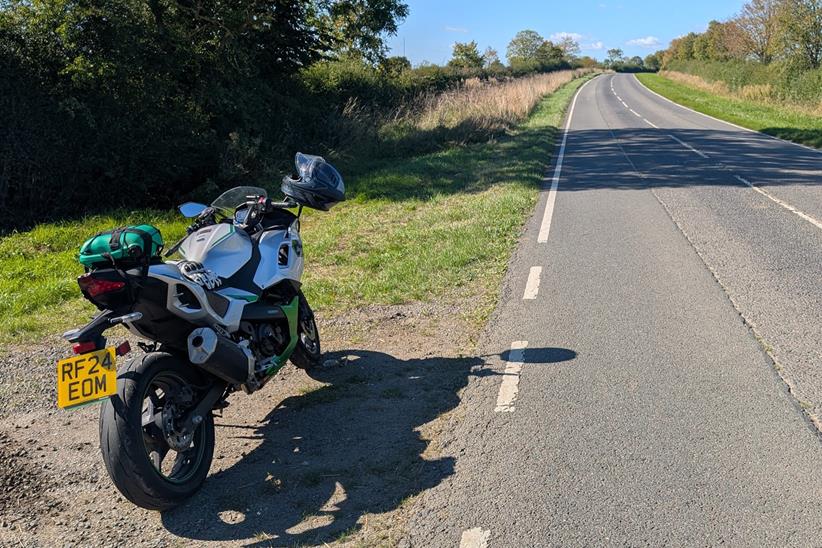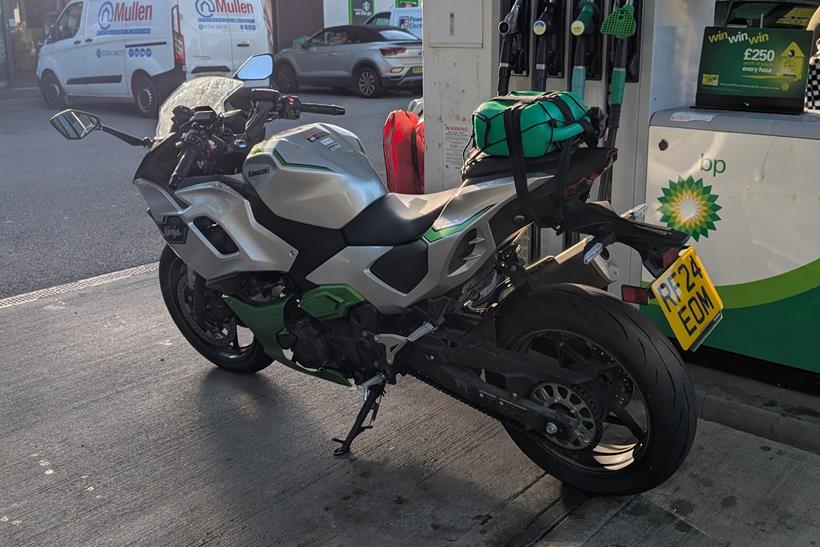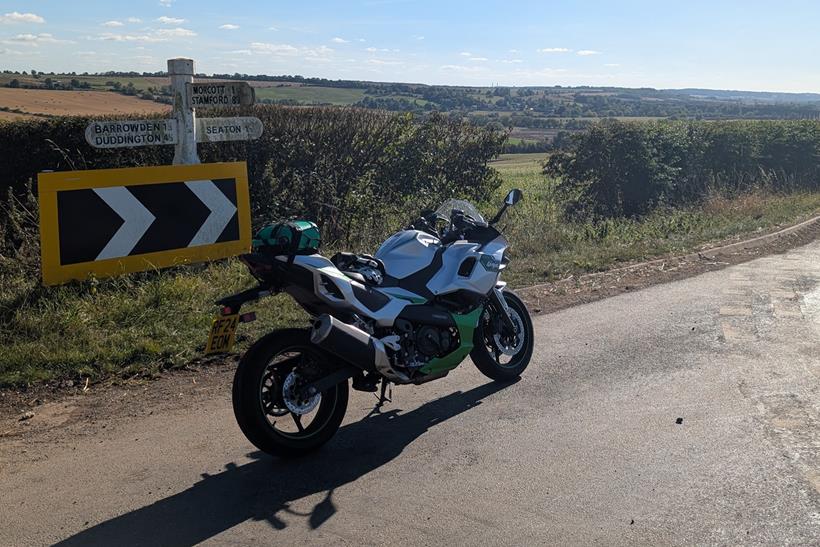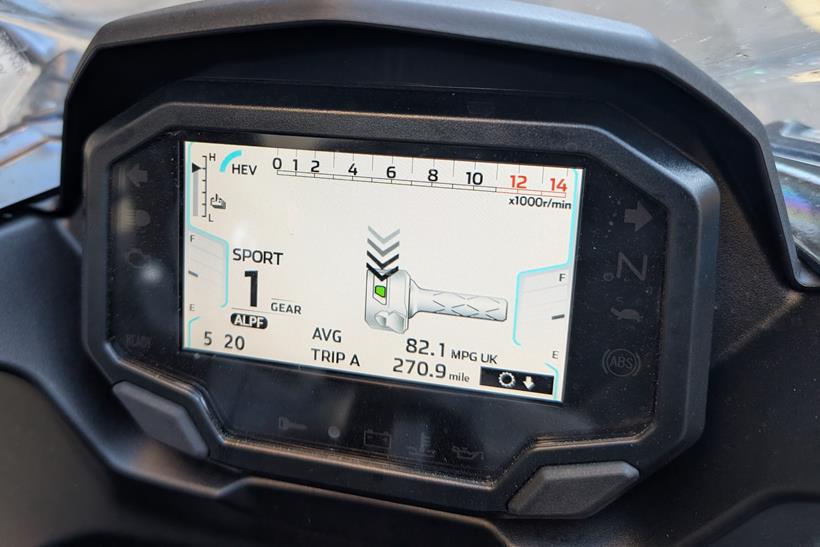I rode a Kawasaki Ninja 7 Hybrid from full to completely empty. Here's how far it goes on a tank...

Since I took delivery of the Ninja 7 Hybrid this year I’ve had one mission in mind – to see if Kawasaki’s claims about the bike were true. Their website states it’s as quick as a supersports bike from a standstill, and that it has the running costs of a 250cc bike, so I set out to test both theories. I engaged expert speed tester Bruce Dunn for the acceleration aspect, but did the fuel economy experiment myself.
Read more
- Update one: First impressions
- Update two: The Hybrid is the ugly duckling of the Ninja family
- Update four: Ninja 7 Hybrid vs ZX-10R – marketing fact check!
- Update five: Recall notice halts the test
- Update six: Final thoughts and round-up
My plan was simple: get as much charge into the battery as possible, brim the petrol tank, strap some additional supplies to the bike, and then go riding, and run it totally out of fuel and electrons, giving me a real-world test of the Kawasaki’s maximum range.
I’d try my best to be frugal, but I didn’t want to get in the way of normal motorists going about their day and the ride had to be representative of what potential buyers can expect from their bikes. My route was carefully selected for its mix of roads, from 20mph town centres to 60mph national speed limit sections.

After a conversation with team route guru, Rich Newland, the ‘Rutland TT’ was identified and as an added bonus, a section of the 120ish-mile loop goes fairly near to where I live.
I began by riding as quickly as I could, in Sport mode, which doesn’t sound very much like I was saving fuel at all. But this is the best way to charge the battery, so while I wasn’t counting the mpg en route to the filling station, I spared no horses at all – and arrived with the battery showing as completely full.
Then I brimmed the bike’s 14-litre tank, put five more litres into a jerry can strapped to the back seat, and set off towards Harringworth on the Rutland border, where I’d pick up the Rutland TT route itself.

The best way to save fuel on any vehicle is to use light throttle inputs and conserve momentum, so that was the basic plan for the day, but the Ninja 7 Hybrid has a party trick: it can run on electric only in the first four gears, at speeds up to 40mph, until the battery goes flat.
Clearly I’d need to carefully choose where to deploy this for best effect, and urban environments seemed sensible, although less so through a busy Melton Mowbray at lunchtime with myriad pedestrians around… several times people walked out in front of me crawling through traffic because they simply couldn’t hear me! The joys of EV life.
After two laps of the TT route (using Eco mode and the automatic gearshift, which reaches sixth gear by 40mph) I was 214 miles in when the fuel light appeared, and decided at this point to head towards roads around where I lived so I’d be somewhere familiar when the bike eventually threw in the towel. By this point I was pretty tired and my bum was aching too – it’s a hard ride on the Hybrid at the best of times, with firm springs required to keep all that additional weight in check, and I was feeling it.

Imagine my consternation, then, when the Ninja carved out another 47.5 miles before it coughed and eventually ran out of petrol. I had to pull off the road to force it into EV mode, and then eked a further nine miles out of the battery before that too gave up the ghost, giving a grand total of 270.9 miles to a tank. That’s pretty impressive.
Happily the 12V battery stays charged, so I put extra fuel in the tank and was able to ride off home. In Sport mode. Quickly.
The verdict
Kawasaki don’t currently offer a 250cc model in the UK for us to compare with directly, but the 26bhp 2016 Ninja 250SL had claimed economy of 77mpg and a range of 180 miles from its 11-litre tank. The old 2008 Ninja 250R returned a claimed 52mpg, although plenty of owners’ reviews give results closer to 72mpg during normal use – so the Hybrid does indeed pass the test.
Riding it, however, was a frustrating battle of wits between powertrain and rider. We picked auto gearshifting for this, because the bike rockets up to sixth much more quickly than is possible manually. Gentle throttle application was the aim of the game, conserving momentum where possible and avoiding energy-sapping braking, using EV-only mode where we could which liberates fuel-free riding up
to 40mph for around seven miles.




